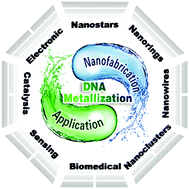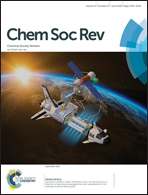DNA metallization: principles, methods, structures, and applications
Abstract
DNA metallization has witnessed tremendous growth and development, from the initial simple synthesis aimed at manufacturing conductive metal nanowires to the current fabrication of various nanostructures for applications in areas as diverse as nanolithography, energy conversion and storage, catalysis, sensing, and biomedical engineering. To this, our aim here was to present a comprehensive review to summarize the research activities on DNA metallization that have appeared since the concept was first proposed in 1998. We start with a brief presentation of the basic knowledge of DNA and its unique advantages in the template-directed growth of metal nanomaterials, followed by providing a systematic summary of the various synthetic methods developed to date to deposit metals on DNA scaffolds. Then, the leverage of DNAs with different sequences, conformations, and structures for tuning the synthesis of feature-rich metal nanostructures is discussed. Afterwards, the discussion is divided around the applications of these metal nanomaterials in the fields mentioned above, wherein the key role DNA metallization plays in enabling high performance is emphasized. Finally, the current status and some future prospects and challenges in this field are summarized. As such, this review would be of great interest to promote the further development of DNA metallization by attracting researchers from various communities, including chemistry, biology, physiology, material science, and nanotechnology as well as other disciplines.



 Please wait while we load your content...
Please wait while we load your content...